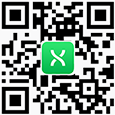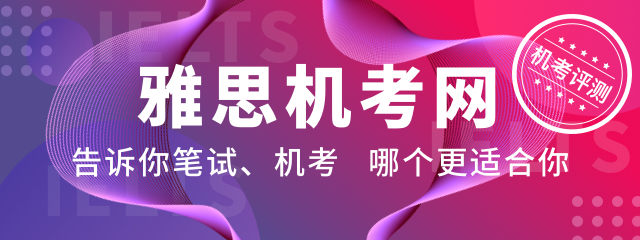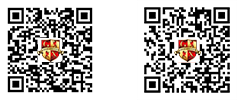学为贵为广大考生提供完整版四六级真题,今天分享的是2017年06月四级考试真题卷2
Part I Writing (25 minutes)
Directions: For this part, you are allowed 30 minutes to write an advertisement on your campus website to sell some of the course books you used at college. Your advertisement may include a brief description of their content,their condition ,their price and your contact information. You should write at least 120 words but no more than 180 words.
Part II Listening Comprehension (30 minutes)
Section A
Directions: In this section, you will hear three news reports. At the end of each news report, you will hear two or three questions. Both the news report and questions will be spoken only once. After you hear questions, you must choose the best answer from the four choices marked A), B), C) and D). Then mark the corresponding letter onAnswer Sheet 1 with a single line through the centre.
注意:此部分试题请在答题卡1上作答。
Questions 1 to 2 are based on the conversation you have just heard.
1. A) The majority of drivers prefer to drive and park themselves.
B) Human drivers become easily distracted or tired while driving.
C) Most drivers feel uncertain about the safety of self-driving cars.
D) Most drivers have test driven cars with automatic braking features.
2. A) Their drivers would feel safe after getting used to the automatic devices.
B) They would be unpopular with drivers who only trust their own skills.
C) Their increased comfort levels have boosted their sales.
D) They are not actually as safe as automakers advertise.
Questions 3 to 4 are based on the conversation you have just heard.
3. A) Thefts of snowmobile dogs in Alaska.
B) A series of injuries to snowmobile drivers.
C) Attacks on some Iditarod Race competitors.
D) A serious accident in the Alaska sports event.
4. A) He stayed behind to look after his injured dogs.
B) He has won the Alaska Iditarod Race four times.
C) He received a minor injury in the Iditarod Race.
D) He has quit the competition in Alaska for good.
Questions 5 to 7 are based on the conversation you have just heard.
5. A) It sank into the sea due to overloading.
B) It ran into Nicaragua’s Big Corn Island.
C) It disappeared between two large islands.
D) It turned over because of strong winds.
6. A) 13. B) 25.
C) 30. D)32.
7. A) He has helped with the rescue effort.
B) He is being investigated by the police.
C) He was drowned with the passengers.
D) He is among those people missing.
Section B
Directions: In this section, you will hear two long conversations. At the end of each conversation, you will hear four questions. Both the conversation and the questions will be spoken only once. After you hear a question, you must choose the best answer from the four choices marked A), B), C) and D). Then mark the corresponding letter on Answer Sheet 1 with a single line through the centre.
Questions 8 to 11 are based on the conversation you have just heard.
8. A) At a shopping centre. B) At a community college.
C) At an accountancy firm. D) At an IT company.
9. A) Helping out with data input. B) Arranging interviews.
C) Sorting application forms. D) Making phone calls.
10. A) He enjoys using computers.
B) He needs the money badly.
C) He wants to work in the city centre.
D) He has relevant working experience.
11. A) Purchase some business suits.
B) Learn some computer language.
C) Improve his programming skills.
D) Review some accountancy terms.
Questions 12 to 15 are based on the conversation you have just heard.
12. A) They are keen on high technology.
B) They are poor at technology skills.
C) They often listen to National Public Radio.
D) They feel superior in science and technology.
13. A) Japanese. B) Germans.
C) Poles. D) Americans.
14. A) Emailing. B) Texting.
C) Science. D) Literacy.
15. A) It is undergoing a drastic reform.
B) It lays emphasis on creative thinking.
C) It has much room for improvement.
D) It prioritizes training of practical skills.
Section C
Directions: In this section, you will hear three passages of lectures or talks followed by three or four questions. The recordings will be played only once. After you hear a question,you must choose the best answer from the four choices marked A), B), C) and D). Then mark the corresponding letter on Answer Sheet 1 with a single line throughthe centre.
Questions 16 to18 are based on the passage you have just heard.
16. A) They have small roots. B) They grow white flowers.
C) They taste like apples. D) They come from Central Africa.
17. A) They turned from white to purple in color.
B) They became popular on the world market.
C) They became an important food for humans.
D) They began to look like modern-day carrots.
18. A) They were found quite nutritious.
B) There were serious food shortages.
C) People discovered their medicinal value.
D) Farm machines helped lower their prices.
Questions 19 to 21 are based on the passage you have just heard.
19. A) She could update her family any time she liked.
B) She could call up her family whenever she liked
C) She could locate her friends wherever they were.
D) She could download as many pictures as she liked.
20. A) She liked to inform her friends about her success.
B) She enjoyed reading her friends’ status updates.
C) She felt quite popular among them.
D) She felt she was a teenager again.
21. A) She could barely respond to all her 500 Facebook friends.
B) She spent more time updating her friends than her family.
C) She could barely balance Facebook updates and her work.
D) She didn’t seem to be doing as well as her Facebook friends.
Questions 22 to 25 are based on the passage you have just heard.
22. A) They have strong muscles.
B) They live a longer life than horses.
C) They eat much less in winter.
D) They can work longer than donkeys.
23. A) It was a pet of a Spanish king.
B) It was bought by George Washington.
C) It was brought over from Spain.
D) It was donated by a U.S. Ambassador.
24. A) They met and exchanged ideas on animal breeding.
B) They participated in a mule-driving competition.
C) They showed and traded animals in the market.
D) They fed mules with the best food they could find.
25. A) The wider use of horses. B) The arrival of tractors.
C) A shrinking animal trade. D) A growing donkey population.
Part Ⅲ Reading Comprehension (40 minutes)
Section A
Directions: In this section, there is a passage with ten blanks. You are required to select one word for each blank from a list of choices given in a word bank following the passage. Read the passage through carefully before making your choices, Each choice in the bank is identified by a letter. Please mark the corresponding letter for each item on Answer Sheet 2 with a single line through the centre. You may not use any of the words in the bank more than once.
Questions 26 to 35 are based on the following passage.
As if you needed another reason to hate the gym, it now turns out that exercise can exhaust not only your muscles, but also your eyes. Fear not, however, for coffee can stimulate them again. During(26)_______exercise, our muscles tire as they run out of fuel and build up waste products. Muscleperformance can also be affected by a (27)_______called "central fatigue,” in which an imbalance inthe body’s chemical messengers prevents the central nervous system from directing muscle movements(28)_______.It was not known, however, whether central fatigue might also affect motor systems notdirectly (29) _______in the exercise itself, such as those that move the eyes. To find out, researchersgave 11 volunteer cyclists a carbohydrate (碳水化合物的)(30)_______either with a moderate doseof caffeine (咖啡因),which is known to stimulate the central nervous system, or as a placebo (安慰剂) without, during 3 hours of (31)_______. After exercising, the scientists tested the cyclists with eye-tracking cameras to see how well their brains could still (32)_______their visual system. The team foundthat exercise reduced the speed of rapid eye movements by about 8%, (33)_______their ability to capturenew visual information. The caffeine, the equivalent of two strong cups of coffee, was (34)_______toreverse this effect, with some cyclists even displaying (35)_______eye movement speeds. So it might bea good idea to get someone else to drive you home after that marathon.
注意:此部分试题请在答题卡2上作答。
A) cautiously | B) commit | C) control | D) cycling |
E) effectively | F)increased | G) involved | H) limited |
I) phenomenon | J) preventing | K) sensitive | L) slowing |
M) solution | N) sufficient | O) vigorous |
Section B
Directions:In this section, you are going to read a passage with ten statements attached to it. Each statement contains information given in one of the paragraphs. Identify the paragraph from which the information is derived. You may choose a paragraph more than once. Each paragraph is marked with a letter. Answer the questions by marking the corresponding letter on Answer Sheet 2.
Team spirit
[A]Teams have become the basic building blocks of organizations. Recruitment advertisements routinely call for “team players”. Business schools grade their students in part on their performance in group projects. Office managers knock down walls to encourage team building. Teams are as old as civilization, of course: even Jesus had 12 co-workers. But a new report by Deloitte, “Global Human Capital Trends”, based on a survey of more than 7,000 executives in over 130 countries, suggests that the fashion for teamwork has reached a new high. Almost half of those surveyed said their companies were either in the middle of restructuring or about to embark on (开始)it; and for the most part, restructuring meant putting more emphasis on teams.
[B]Companies are abandoning conventional functional departments and organising employees into cross-disciplinary teams that focus on particular products, problems or customers. These teams are gaining more power to run their own affairs. They are also spending more time working with each other rather than reporting upwards. Deloitte argues that a new organisational form is on the rise: a network of teams is replacing the conventional hierarchy (等级体制).
[C]The fashion for teams is driven by a sense that the old way of organising people is too rigid for both the modem marketplace and the expectations of employees. Technological innovation places greater value on agility (灵活性).John Chambers, chairman of Cisco Systems Inc., a worldwide leader in electronics products, says that “we compete against market transitions (过渡),not competitors. Product transitions used to take five or seven years; now they take one or two. ” Digital technology also makes it easier for people to co-ordinate their activities without resorting to hierarchy. The “millennials” (千禧一代) who will soon make up half the workforce in rich countries were raised from nursery school onwards to work in groups.
[D]The fashion for teams is also spreading from the usual corporate suspects (such as GE and IBM) to some more unusual ones. The Cleveland Clinic, a hospital operator, has reorganised its medical staff into teams to focus on particular treatment areas; consultants, nurses and others collaborate closely instead of being separated by speciality (专业)and rank. The US Army has gone the same way. In his book, “Team of Teams' General Stanley McChrystal describes how the army’s hierarchical structure hindered its operations during the early stages of the Iraq war. His solution was to learn something from the insurgents it was fighting: decentralise authority to self-organising teams.
[E]A good rule of thumb is that as soon as generals and hospital administrators jump on a management bandwagon, it is time to ask questions. Leigh Thompson of Kellogg School of Management in Illinois warns that, ‘Teams are not always the answer—teams may provide insight, creativity and knowledge in a way that a person working independently cannot; but teamwork may also lead to confusion, delay and poor decision-making.” The late Richard Hackman of Harvard University once argued, “I have no question that when you have a team, the possibility exists that it will generate magic, producing something extraordinary... But don’t count on it.”
[F]Hackman (who died in 2013) noted that teams are hampered by problems of co-ordination and motivation that chip away at the benefits of collaboration. High-flyers forced to work in teams may beundervalued and free-riders empowered. Groupthink may be unavoidable. In a study of 120 teams of senior executives, he discovered that less than 10% of their supposed members agreed on who exactly was on the team. If it is hard enough to define a team’s membership, agreeing on its purpose is harder still.
[G]Profound changes in the workforce are making teams trickier to manage. Teams work best if their members have a strong common culture. This is hard to achieve when, as is now the case in many big firms, a large proportion of staff are temporary contractors. Teamwork improves with time: America’s National Transportation Safety Board found that 73% of the incidents in its civil-aviation database occurred on a crew’s first day of flying together. However, as Amy Edmondson of Harvard points out, organisations increasingly use “team” as a verb rather than a noun: they form teams for specific purposes and then quickly disband them.
[H]The least that can be concluded from this research is that companies need to think harder about managing teams. They need to rid their minds of sentimentalism (感情用事):the most successful teams have leaders who are able to set an overall direction and take immediate action. They need to keep teams small and focused: giving in to pressure to be more “inclusive” is a guarantee of dysfunction. Jeff Bezos, Amazon’s boss, says that “If I see more than two pizzas for lunch, the team is too big.” They need to immunize teams against group-think: Hackman argued that the best ones contain “deviants” (离经叛道者)who are willing to do something that maybe upsetting to others.
[I]A new study of 12,000 workers in 17 countries by Steelcase, a furniture-maker which also does consulting, finds that the best way to ensure employees are “engaged” is to give them more control over where and how they do their work―which may mean liberating them from having to do everything in collaboration with others.
[J]However, organisations need to learn something bigger than how to manage teams better: they need to be in the habit of asking themselves whether teams are the best tools for the job. Teambuilding skills are in short supply: Deloitte reports that only 12%of the executives they contacted feel they understand the way people work together in networks and only 21% feel confident in their ability to build cross-functional teams. Loosely managed teams can become hotbeds of distraction―employees routinely complain that they can’t get their work done because they are forced to spend too much time in meetings or compelled to work in noisy offices. Even in the age of open-plan offices and social networks some work is best left to the individual.
注意:此部分试题请在答题卡2上作答。
36. Successful team leaders know exactly where the team should go and are able to take prompt action.
37. Decentralisation of authority was also found to be more effective in military operations.
38. In many companies, the conventional form of organisation is giving way to a network of teams.
39. Members of poorly managed teams are easily distracted from their work.
40. Teamwork is most effective when team members share the same culture.
41. According to a report by Deloitte, teamwork is becoming increasingly popular among companies.
42. Some team members find it hard to agree on questions like membership and the team’s purpose.
43. Some scholars think teamwork may not always be reliable, despite its potential to work wonders.
44. To ensure employees’commitment, it is advisable to give them more flexibility as to whereand how they work.
45. Product transitions take much less time now than in the past.
Section C
Directions: There are 2 passages in this section. Each passage is followed by some questions or unfinished statements. For each of them there are four choices marked A), B), C) and D). You should decide on the best choice and mark the corresponding letter on Answer Sheet 2with a single line through the centre.
Passage One
Questions 46 to 50 are based on the following passage.
The Shoppers in the UK are spending less money on toilet paper to save money, research has shown.
Penny-pinching UK consumers choose cheaper products from discounters such as Aldi and Lidl rather than luxury alternatives.
This has wiped 6% off the value of the soft tissue paper market in the UK. It has shrunk from £1.19 billion in 2011 to £1.12 billion in 2015,according to a new report from market research company Mintel. Furthermore, the future of the market looks far from rosy, with sales expected to fall further to £1.11 billion in 2016.
In the last year alone, despite an increase in the UK population and a subsequent rise in the number of households, sales of toilet paper fell by 2%, with the average household reducing their toilet roll spending from £43 in 2014 to £41 in 2015.
想要获得更多四六级备考真题、资讯和干货,扫码下载“四六级必过”APP,即可随时练习。


 北京
北京
 400-6236-898
400-6236-898










 官方微信
官方微信
 官方微博
官方微博